53 Hidden Stories Behind Features on Everyday Objects
Nathan Johnson
Published
07/26/2020
in
wow
Most people fail to realize the purpose behind these designs.
- List View
- Player View
- Grid View
Advertisement
-
1.
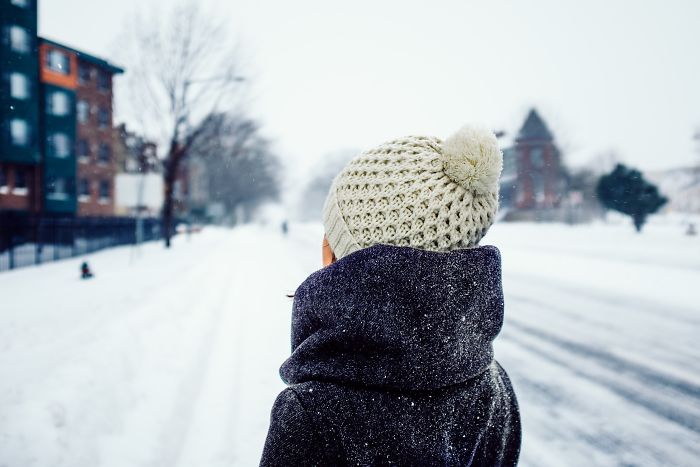 The pom-poms on beanies and other hats. They might look cute and fluffy now but they had an actual function before. French sailors used to wear hats with pom-poms so that they wouldn't hurt their heads on the ceilings of the ship during rough weather.
The pom-poms on beanies and other hats. They might look cute and fluffy now but they had an actual function before. French sailors used to wear hats with pom-poms so that they wouldn't hurt their heads on the ceilings of the ship during rough weather. -
2.
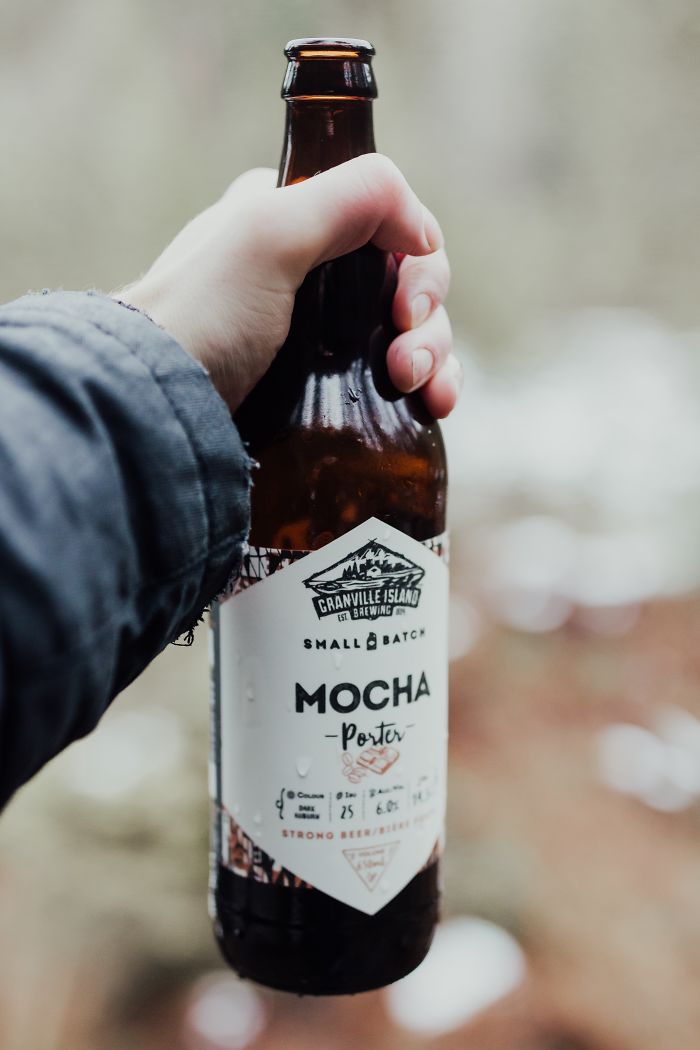 Long bottle-necks. The shape of a beer or a soda bottle is so familiar, nobody would think twice about it. But it turns out this long bottleneck is shaped this way on purpose.According to “Interesting Engineering,” such a design allows packers to seal off the top with a small bottle cap, reducing the size of the seal and thus saving money. Plus, it’s practical, since a small seal on a beverage container is stronger and more reliable than one which covers a larger area.
Long bottle-necks. The shape of a beer or a soda bottle is so familiar, nobody would think twice about it. But it turns out this long bottleneck is shaped this way on purpose.According to “Interesting Engineering,” such a design allows packers to seal off the top with a small bottle cap, reducing the size of the seal and thus saving money. Plus, it’s practical, since a small seal on a beverage container is stronger and more reliable than one which covers a larger area. -
3.
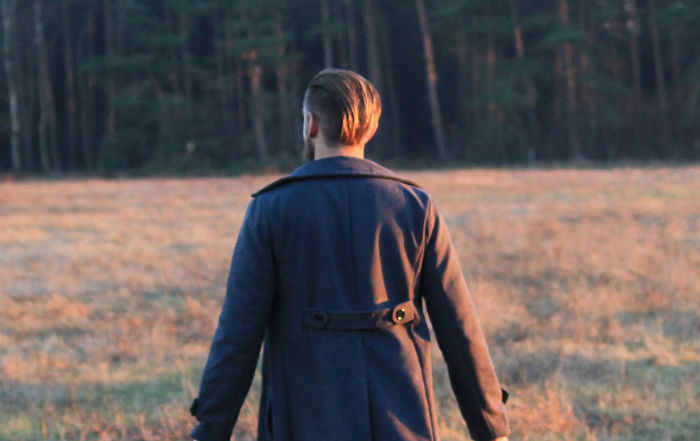 The half-belt on coats and jackets. Nowadays, half-belts are added to clothes mostly for the sake of style. However, they were originally used on oversized military jackets that doubled as blankets to gather up all the extra material so that soldiers could walk without stumbling.
The half-belt on coats and jackets. Nowadays, half-belts are added to clothes mostly for the sake of style. However, they were originally used on oversized military jackets that doubled as blankets to gather up all the extra material so that soldiers could walk without stumbling. -
4.
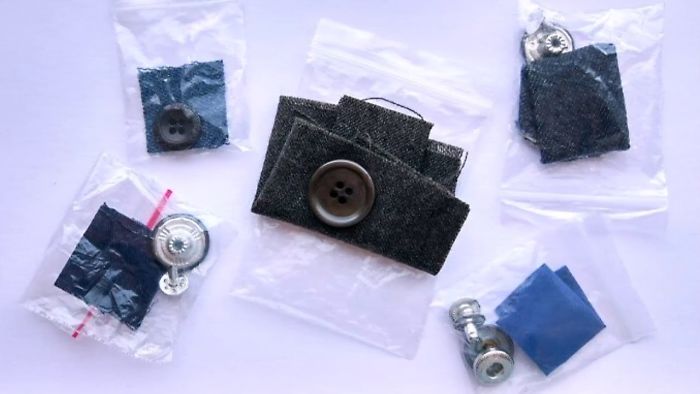 The fabric swatch. If you're curious about the world of fashion like we are, then you've probably wondered about those tiny squares of fabric with buttons in small Ziploc bags that come with new clothes. Sure, you can use the button to replace a missing one and you can use the piece of fabric to patch up a hole. But the main purpose of the fabric swatch is for you to test out different cleaning products on it so you won't ruin your clothes.
The fabric swatch. If you're curious about the world of fashion like we are, then you've probably wondered about those tiny squares of fabric with buttons in small Ziploc bags that come with new clothes. Sure, you can use the button to replace a missing one and you can use the piece of fabric to patch up a hole. But the main purpose of the fabric swatch is for you to test out different cleaning products on it so you won't ruin your clothes. -
5.
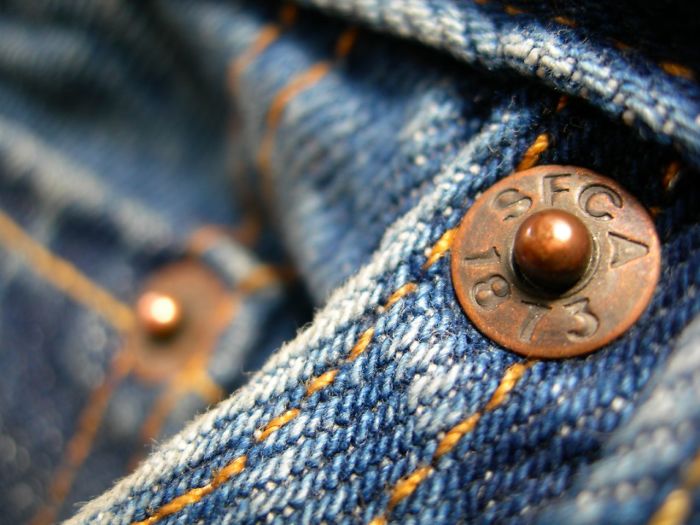 The tiny buttons on your jeans. These buttons are known as rivets and they're the silent heroes that make your pants last longer. They're placed in the areas that are most likely to tear from movement or strain and help hold the fabric together.
The tiny buttons on your jeans. These buttons are known as rivets and they're the silent heroes that make your pants last longer. They're placed in the areas that are most likely to tear from movement or strain and help hold the fabric together. -
6.
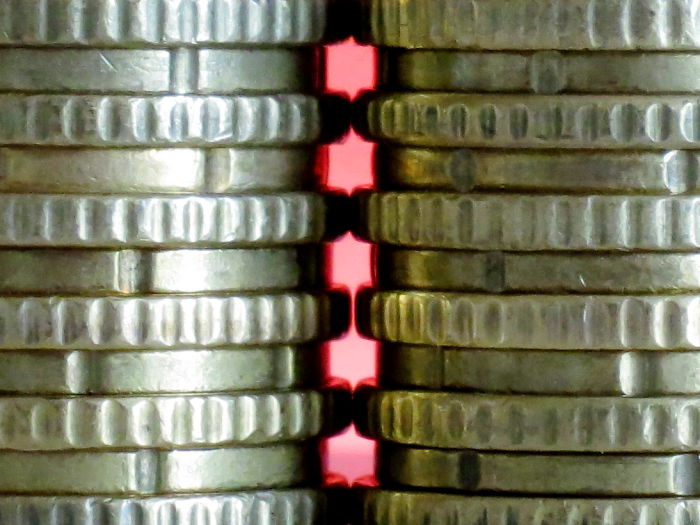 The ridges on the edges of some coins. Ridge patterns on coins are a relic of the past when precious metal coins would be as valuable as their weight. However, some sneaky rogues would shave off the edges of coins and use that metal to mint new coins while spending the shaved coins as if they didn't weigh less. The ridges were added so it would be obvious when somebody had shaved off parts of a coin and was trying to cheat the system.
The ridges on the edges of some coins. Ridge patterns on coins are a relic of the past when precious metal coins would be as valuable as their weight. However, some sneaky rogues would shave off the edges of coins and use that metal to mint new coins while spending the shaved coins as if they didn't weigh less. The ridges were added so it would be obvious when somebody had shaved off parts of a coin and was trying to cheat the system. -
7.
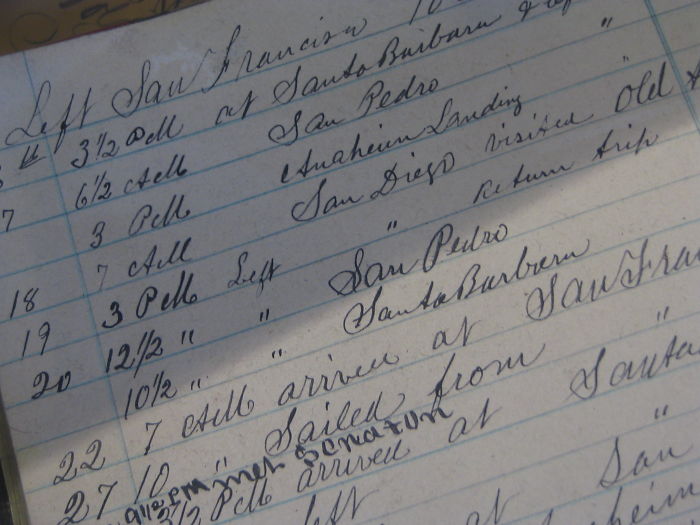 Notebook margins. Remember the horror of realizing that “college ruled” notebook paper meant slimmer margins, and therefore left room for more writing? Well, believe it or not, those margins weren’t invented as a guide for how many sentences you could fit onto one page, or even to leave space for note-taking. Manufacturers began to apply margins to writing paper for the purpose of protecting your work. Earlier on in history, rats were a common resident in many people’s homes, and one of their favorite snacks was your paper, in addition to everything else they could munch on. Applying wide margins to paper safeguarded against losing important work by leaving blank spaces around the edges for the rats to chew through first, and to protect the writing on the outer edges from general wear and tear.
Notebook margins. Remember the horror of realizing that “college ruled” notebook paper meant slimmer margins, and therefore left room for more writing? Well, believe it or not, those margins weren’t invented as a guide for how many sentences you could fit onto one page, or even to leave space for note-taking. Manufacturers began to apply margins to writing paper for the purpose of protecting your work. Earlier on in history, rats were a common resident in many people’s homes, and one of their favorite snacks was your paper, in addition to everything else they could munch on. Applying wide margins to paper safeguarded against losing important work by leaving blank spaces around the edges for the rats to chew through first, and to protect the writing on the outer edges from general wear and tear. -
8.
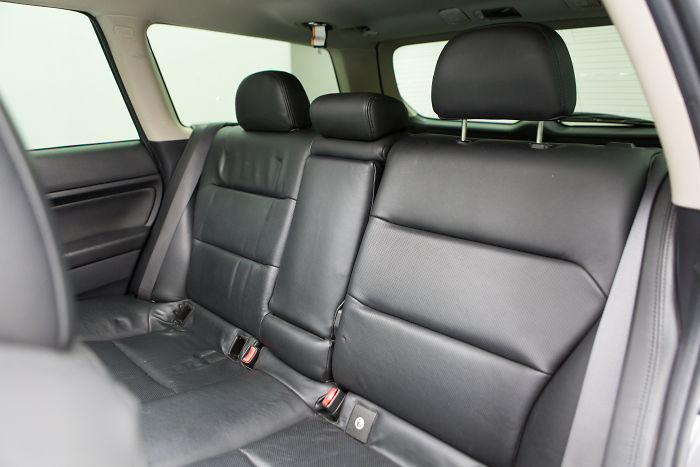 Headrests are made to be adjustable to comfortably support a person's head, whether they're tall or short. While this makes sense, why make them completely detachable too? Well, survival. When you pull your headrest out of the seat, it has two sturdy, long metal bars. That means, if you find yourself trapped inside a car and need to get out quickly, you can simply detach your headrest and use it to smash out the window.
Headrests are made to be adjustable to comfortably support a person's head, whether they're tall or short. While this makes sense, why make them completely detachable too? Well, survival. When you pull your headrest out of the seat, it has two sturdy, long metal bars. That means, if you find yourself trapped inside a car and need to get out quickly, you can simply detach your headrest and use it to smash out the window. -
9.
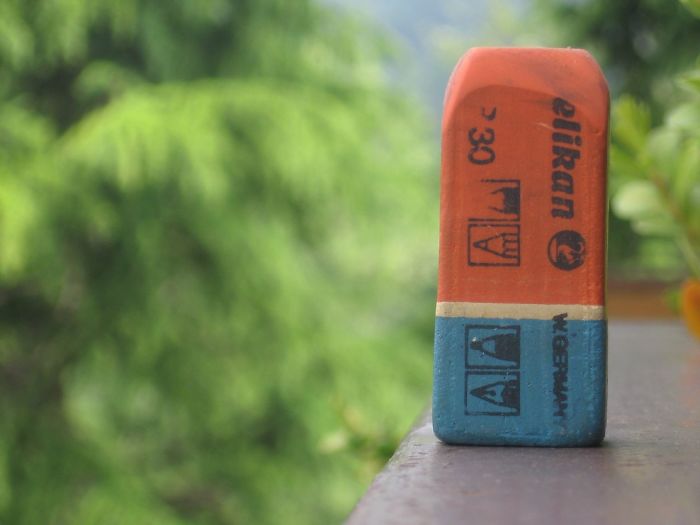 Double-colored erasers. The different-colored sides are used to erase marks made by different pencils on different types of paper. While the soft pinkish-orange side is used for light grades of paper and lighter pencil marks, the blue side is meant for grainier, tougher paper and darker marks. The blue side was later promoted for removing pen marks because a lot of people didn't understand what it was meant for.
Double-colored erasers. The different-colored sides are used to erase marks made by different pencils on different types of paper. While the soft pinkish-orange side is used for light grades of paper and lighter pencil marks, the blue side is meant for grainier, tougher paper and darker marks. The blue side was later promoted for removing pen marks because a lot of people didn't understand what it was meant for. -
10.
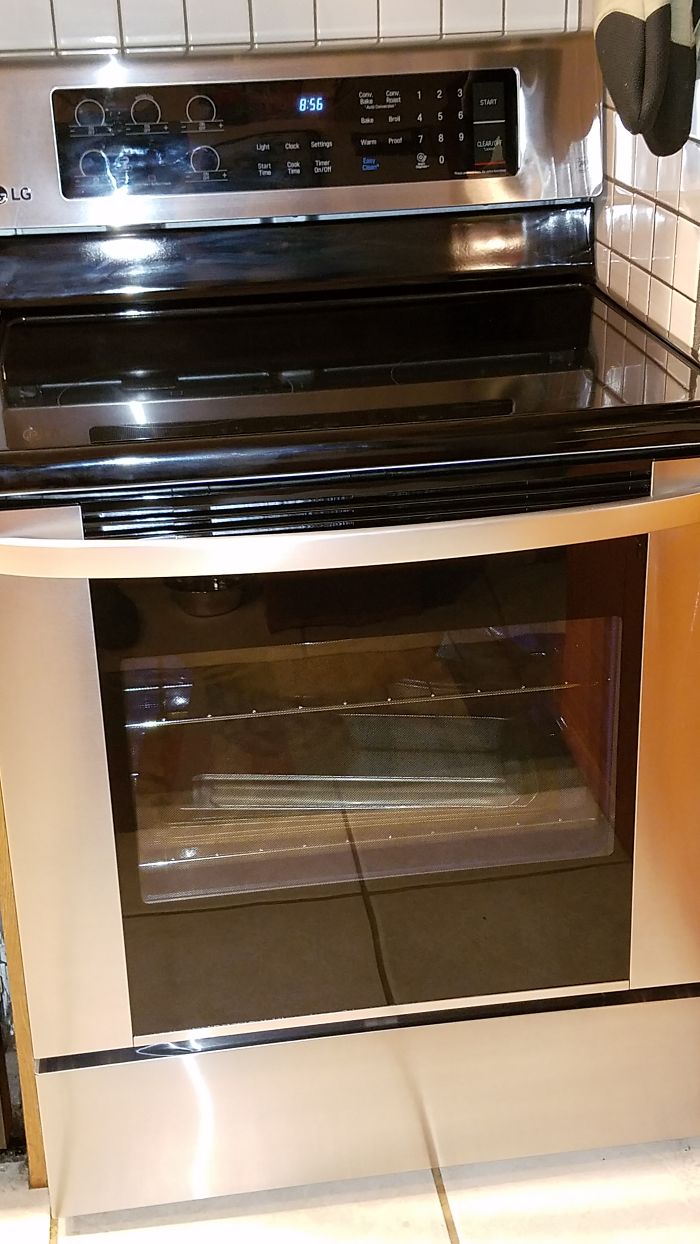 Remember that drawer under your oven? The one where you keep your kitchen gear that doesn't belong anywhere else? It wasn’t actually designed for that. Manufacturers originally made that drawer for keeping food warm until you were ready to serve it. Now tell us how many people do you know who actually do this.
Remember that drawer under your oven? The one where you keep your kitchen gear that doesn't belong anywhere else? It wasn’t actually designed for that. Manufacturers originally made that drawer for keeping food warm until you were ready to serve it. Now tell us how many people do you know who actually do this. -
11.
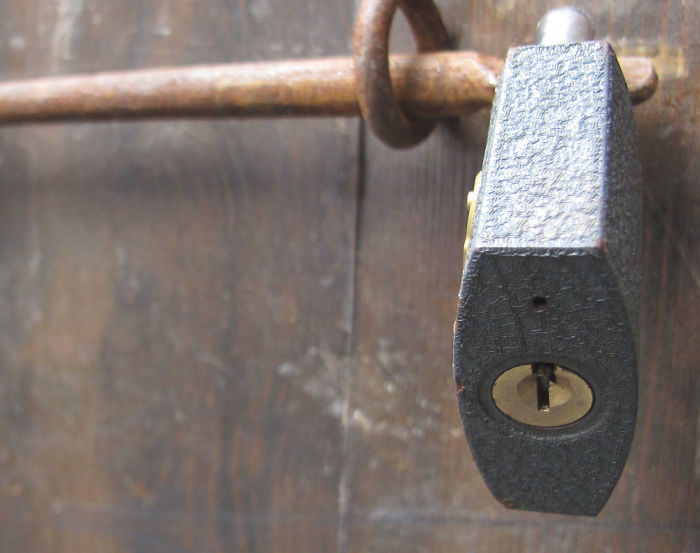 The small holes on locks. They help drain water from locks which stop it from rusting and clogging up with gunk. You can also use the hole to oil the lock's inner mechanism and keep it in tip-top shape.
The small holes on locks. They help drain water from locks which stop it from rusting and clogging up with gunk. You can also use the hole to oil the lock's inner mechanism and keep it in tip-top shape. -
12.
 The holes in pen caps. Some people can't help but chew the caps of their pens (tip: don't do this). However, it's a potential health hazard because you might swallow it and choke. The holes in the caps allow people to breathe in case that happens.
The holes in pen caps. Some people can't help but chew the caps of their pens (tip: don't do this). However, it's a potential health hazard because you might swallow it and choke. The holes in the caps allow people to breathe in case that happens. -
13.
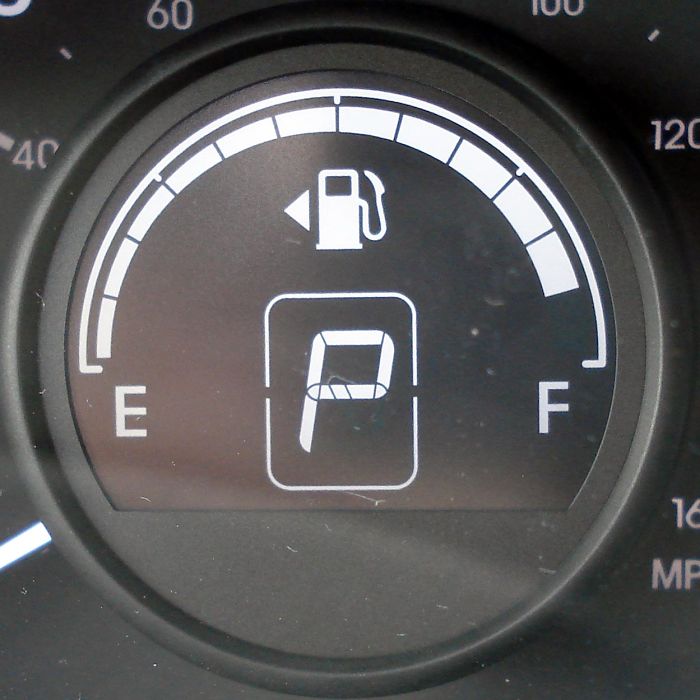 The little arrow-like symbol on a dashboard. It’s not only you who, upon arrival at a gas station, has had to work hard at remembering which side your gas tank is on. It turns out, the answer has been right in front of you.Every dashboard has a little symbol—an arrow or a triangle—placed near the gas gauge. It indicates precisely that which you forgot: which side your gas tank is on. If the arrow is pointing left, look for the filler cap there. If it is pointing right, you know what to do.
The little arrow-like symbol on a dashboard. It’s not only you who, upon arrival at a gas station, has had to work hard at remembering which side your gas tank is on. It turns out, the answer has been right in front of you.Every dashboard has a little symbol—an arrow or a triangle—placed near the gas gauge. It indicates precisely that which you forgot: which side your gas tank is on. If the arrow is pointing left, look for the filler cap there. If it is pointing right, you know what to do. -
14.
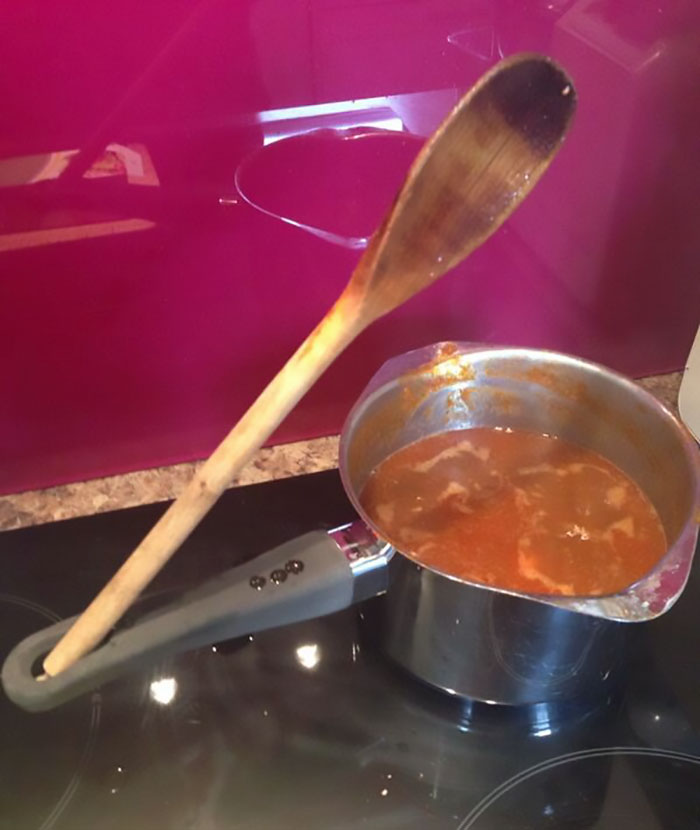 The holes in the handles of utensils. Sure, they're great when you want to hang your pan or pot on a wall but they're also perfect for holding spoons and ladles while cooking. That way, you won't get your kitchen counter messy!
The holes in the handles of utensils. Sure, they're great when you want to hang your pan or pot on a wall but they're also perfect for holding spoons and ladles while cooking. That way, you won't get your kitchen counter messy! -
15.
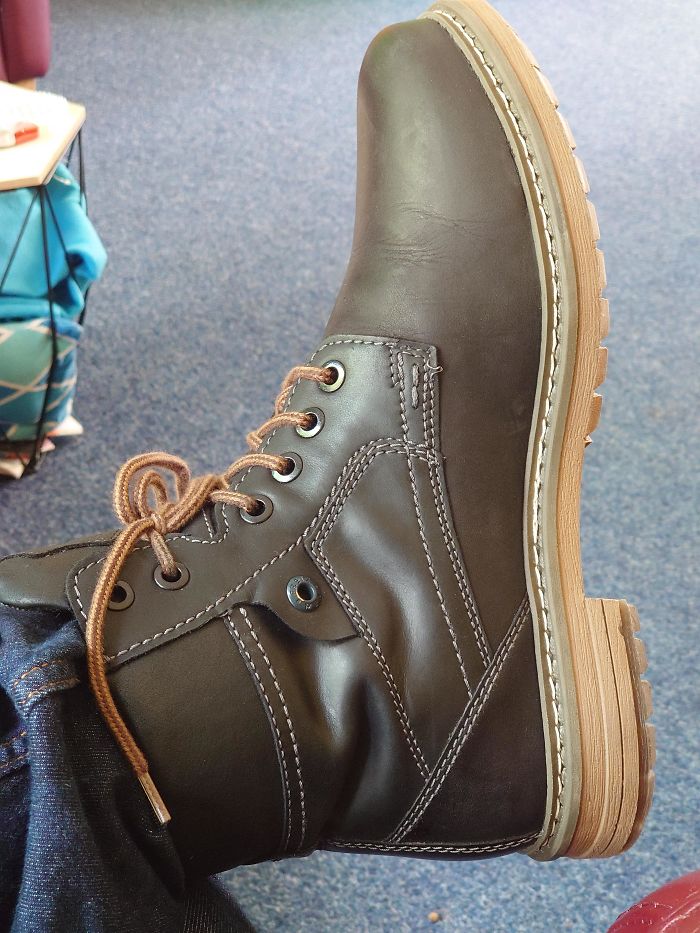 The extra eyelets on shoes. If you loop your laces through them, then you tighten the shoe around your ankle and prevent the shoe from moving around. This way you increase the stability of the shoe, decrease impact loading rates, and prevent your foot from moving about while climbing or descending hills and trails. It's great for jogging and hiking!
The extra eyelets on shoes. If you loop your laces through them, then you tighten the shoe around your ankle and prevent the shoe from moving around. This way you increase the stability of the shoe, decrease impact loading rates, and prevent your foot from moving about while climbing or descending hills and trails. It's great for jogging and hiking! -
16.
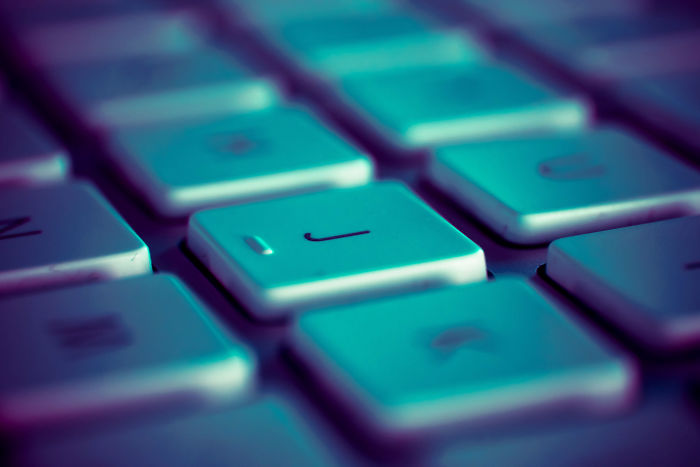 The ridges on the “F” and “J” keys on the keyboard. They help your fingers find their location on the keyboard. This way you can type without having to glance down much easier.
The ridges on the “F” and “J” keys on the keyboard. They help your fingers find their location on the keyboard. This way you can type without having to glance down much easier. -
17.
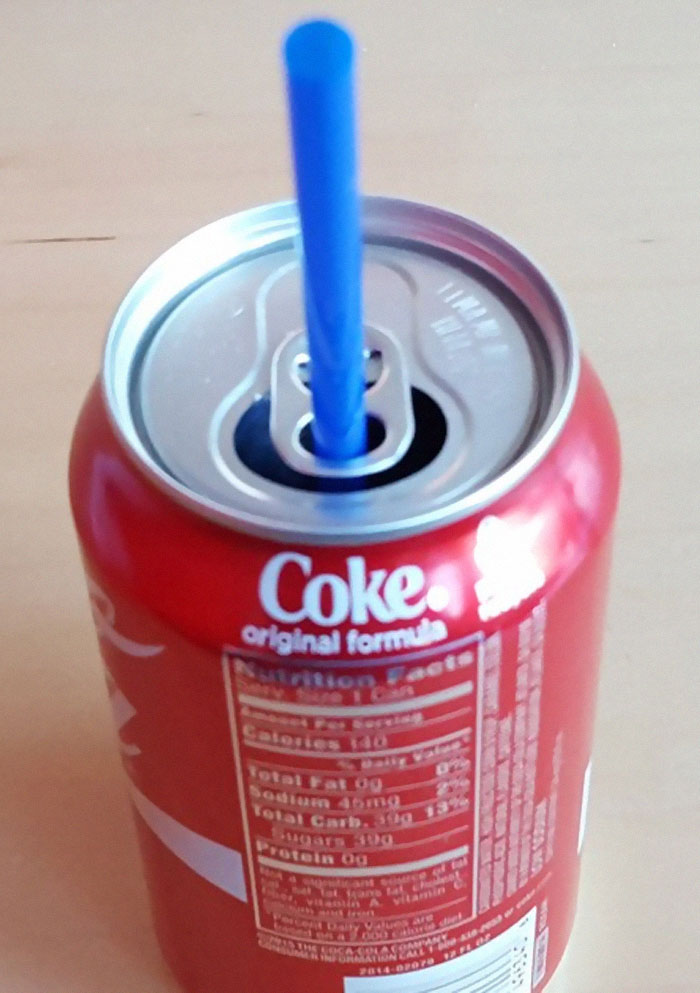 The hole in a soda can tab. Most of us open up cans of soda using the tab without giving he small piece of metal a second thought. However, if you rotate the tab, you can stick your straw through it and the straw won't rise out of the can because of the bubbles in the soda. Now, you can sip away in peace!
The hole in a soda can tab. Most of us open up cans of soda using the tab without giving he small piece of metal a second thought. However, if you rotate the tab, you can stick your straw through it and the straw won't rise out of the can because of the bubbles in the soda. Now, you can sip away in peace! -
18.
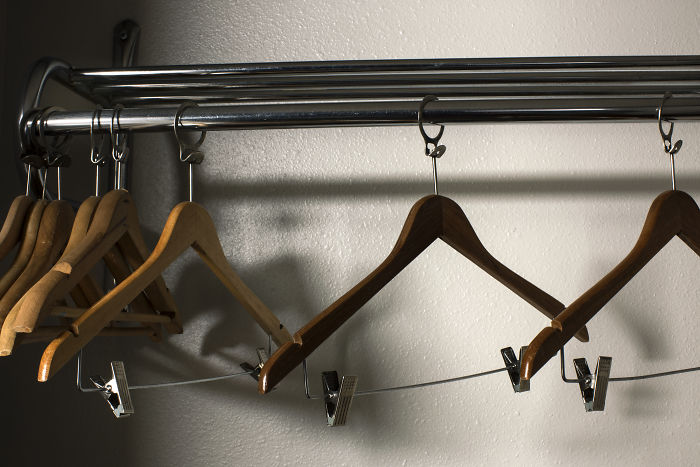 You might think that wooden coat hangers are simply a fancier version of the ones made from plastic or wire. But in reality, they actually have a unique purpose to them. These closet hangers aren't just made from any wood. They're from cedarwood, which is known to repel bugs and moths. Not to mention its refreshing scent and durability. These hangers are perfect for heavy clothing that is susceptible to damage from insects, such as coats and jackets or dresses. Especially those that were made from wool.
You might think that wooden coat hangers are simply a fancier version of the ones made from plastic or wire. But in reality, they actually have a unique purpose to them. These closet hangers aren't just made from any wood. They're from cedarwood, which is known to repel bugs and moths. Not to mention its refreshing scent and durability. These hangers are perfect for heavy clothing that is susceptible to damage from insects, such as coats and jackets or dresses. Especially those that were made from wool. -
19.
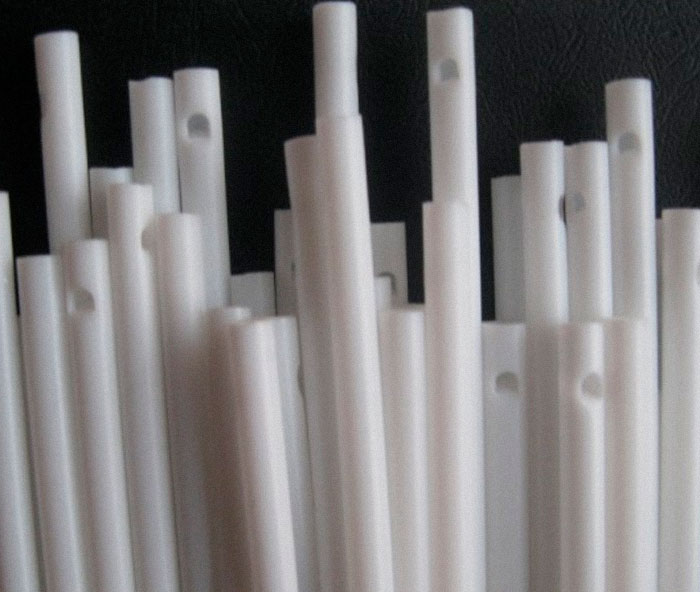 The hole at the top of a lollipop stick. The Hole At The Top Of A Lollipop Stick. This weird little hole emerging after you finish a candy has been bugging us for years. Who would ever put a whistle there if it doesn't work?! It turns out, the reason for this lollipop stick hole has to do with manufacturing. When pouring hot, molten caramel into the mold, some of it seeps into this hole and hardens. It allows the candy to stay on the stick and not to fall off.
The hole at the top of a lollipop stick. The Hole At The Top Of A Lollipop Stick. This weird little hole emerging after you finish a candy has been bugging us for years. Who would ever put a whistle there if it doesn't work?! It turns out, the reason for this lollipop stick hole has to do with manufacturing. When pouring hot, molten caramel into the mold, some of it seeps into this hole and hardens. It allows the candy to stay on the stick and not to fall off. -
20.
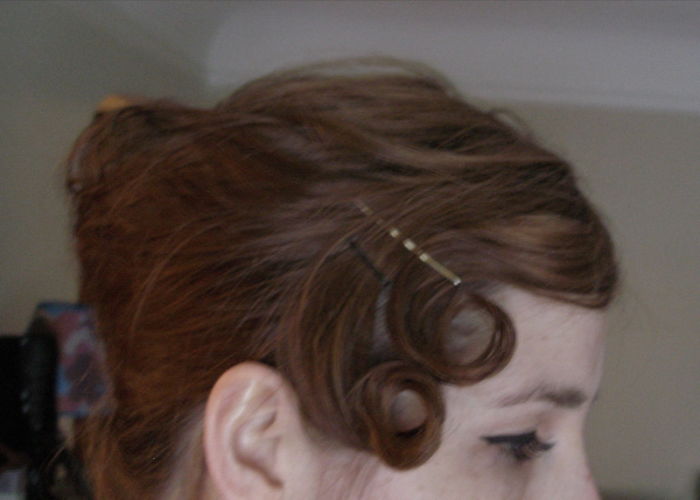 When you see a person with bobby pins in their hair, they’re usually wavy side up. This is because they probably assume the curves in the pin are there for fashion. The true purpose for the little waves, however, is to grip the pin into place by catching it to the underlying bulk of hair. In other words, wavy side down.
When you see a person with bobby pins in their hair, they’re usually wavy side up. This is because they probably assume the curves in the pin are there for fashion. The true purpose for the little waves, however, is to grip the pin into place by catching it to the underlying bulk of hair. In other words, wavy side down. -
21.
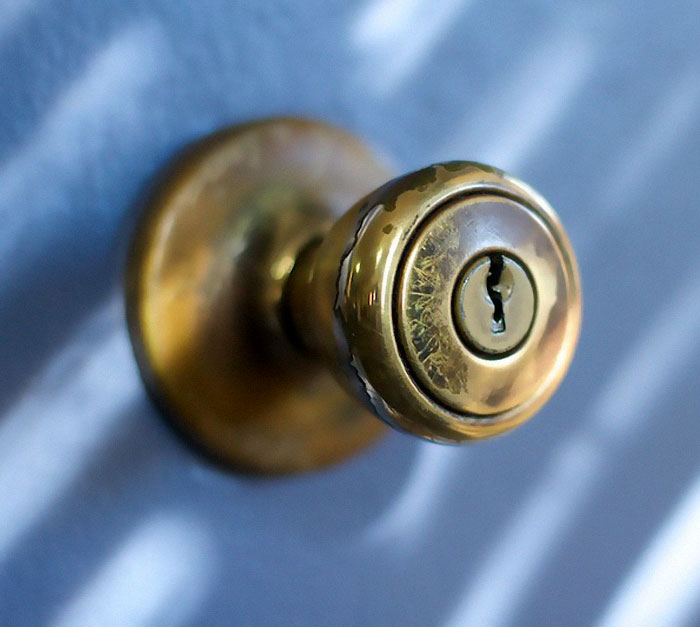 A lot of doorknobs are made out of brass because it destroys bacteria. So, these types of doorknobs are essentially germ-proof. Perfect in a household with lots of kids.
A lot of doorknobs are made out of brass because it destroys bacteria. So, these types of doorknobs are essentially germ-proof. Perfect in a household with lots of kids. -
22.
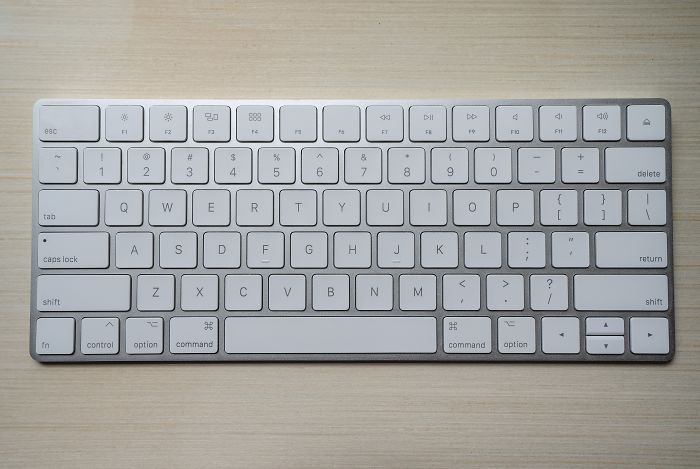 Have you ever wondered why keyboard letters are arranged the way they are? To find the answer to this question, we need to take a look at the first keyboard ever invented. It belonged to the typewriter. Originally, keys were arranged in alphabetical order but typists got so good at their job that they would end up typing too fast and the key “arms” would get cross-wired and stuck. So, keyboard manufacturers had to randomize the order of keys to intentionally slow down typists to keep the machine running, and we haven’t changed it back to this day.
Have you ever wondered why keyboard letters are arranged the way they are? To find the answer to this question, we need to take a look at the first keyboard ever invented. It belonged to the typewriter. Originally, keys were arranged in alphabetical order but typists got so good at their job that they would end up typing too fast and the key “arms” would get cross-wired and stuck. So, keyboard manufacturers had to randomize the order of keys to intentionally slow down typists to keep the machine running, and we haven’t changed it back to this day. -
23.
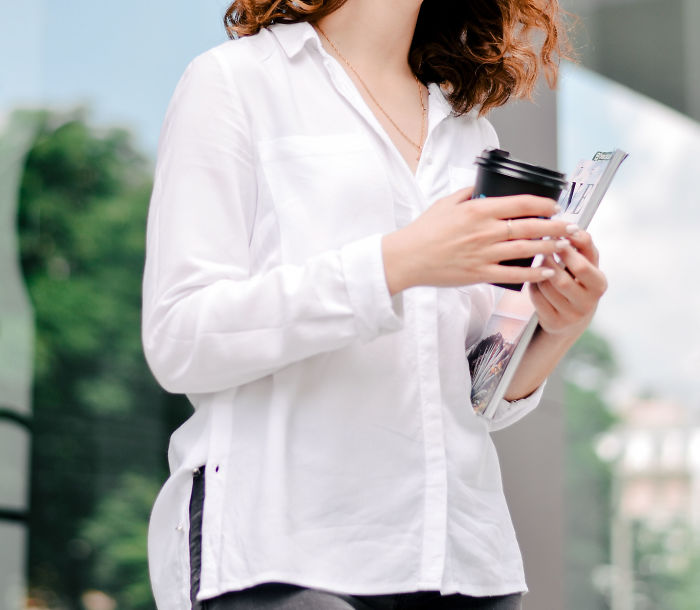 Aside from the obvious use for buttons, you might have wondered why the ones women’s shirts are on the left. Especially when you consider that most people are right-handed. Turns out, putting the buttons on the left of clothes is an old tradition carried over from a time when buttons represented your social and financial status. If you owned buttons, you probably were being dressed by a chambermaid, and the buttons on your left were on her right when she was facing you.
Aside from the obvious use for buttons, you might have wondered why the ones women’s shirts are on the left. Especially when you consider that most people are right-handed. Turns out, putting the buttons on the left of clothes is an old tradition carried over from a time when buttons represented your social and financial status. If you owned buttons, you probably were being dressed by a chambermaid, and the buttons on your left were on her right when she was facing you. -
24.
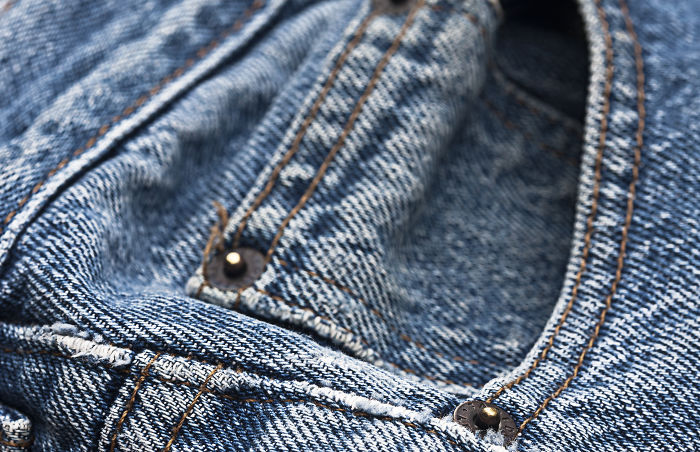 A teeny-tiny pocket that's seemingly pointless. If you’re wearing a good ol’ pair of jeans, chances are it has a teeny-tiny pocket above the regular pockets on the front. The same place where you get your thumb stuck now and then. It was originally meant to tuck in a hand watch. Levi’s points out it has served more purposes throughout the years, like storing coins, matches, and tickets.
A teeny-tiny pocket that's seemingly pointless. If you’re wearing a good ol’ pair of jeans, chances are it has a teeny-tiny pocket above the regular pockets on the front. The same place where you get your thumb stuck now and then. It was originally meant to tuck in a hand watch. Levi’s points out it has served more purposes throughout the years, like storing coins, matches, and tickets. -
25.
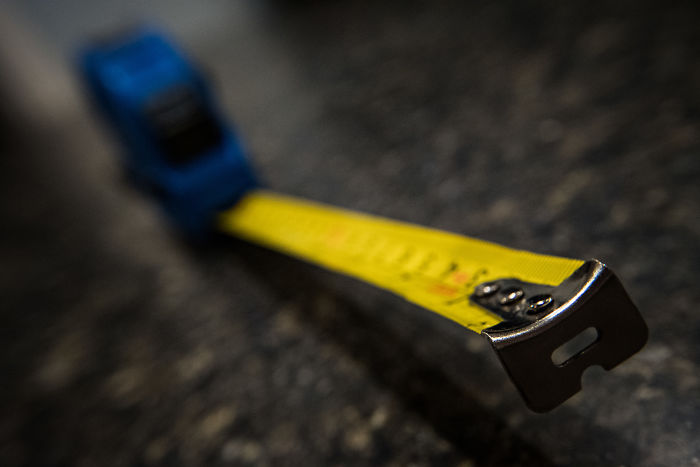 The little slot at the end of measuring tape. Most measuring tapes come with a metal stub with a small slot on the end. In case all your hands are full, hang the slot on a nail for measurement. If you look closely, you will also notice that the stub is slightly serrated on one side. It can be used to mark the points without a pencil.
The little slot at the end of measuring tape. Most measuring tapes come with a metal stub with a small slot on the end. In case all your hands are full, hang the slot on a nail for measurement. If you look closely, you will also notice that the stub is slightly serrated on one side. It can be used to mark the points without a pencil. -
26.
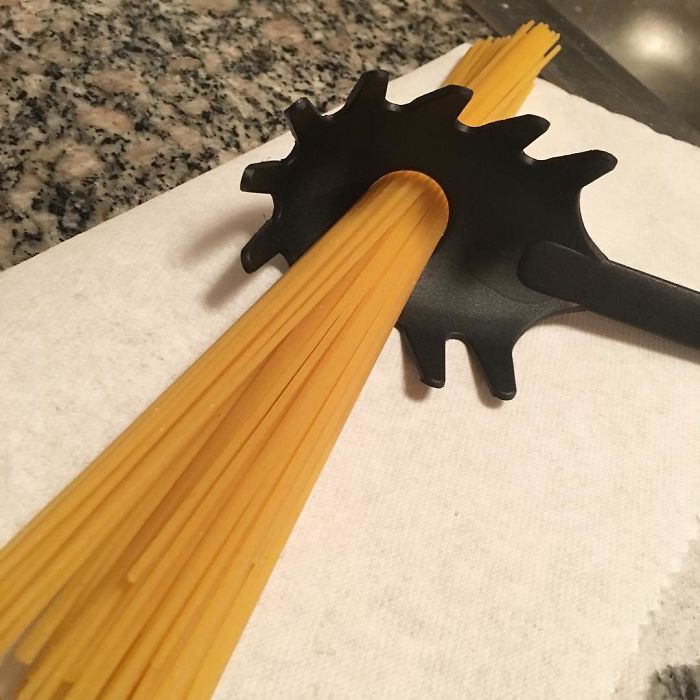 Hole in a pasta spoon. Even if you’re a pasta lover, it doesn’t mean you know what the hole in a spaghetti ladle is for. The hole is actually designed to serve as portion measurement to make sure you are cooking the right amount. It should suffice for one portion of spaghetti, so if you’re cooking for two, make sure you let two handfuls of pasta go through it.
Hole in a pasta spoon. Even if you’re a pasta lover, it doesn’t mean you know what the hole in a spaghetti ladle is for. The hole is actually designed to serve as portion measurement to make sure you are cooking the right amount. It should suffice for one portion of spaghetti, so if you’re cooking for two, make sure you let two handfuls of pasta go through it. -
27.
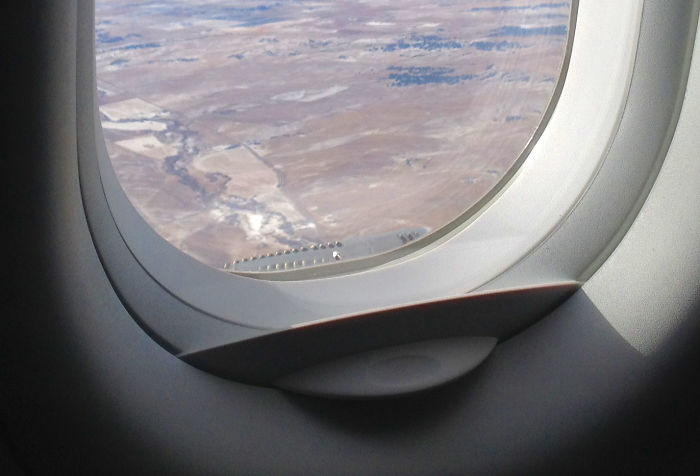 If you fly a lot, then maybe you’ve rolled over the possible uses for the tiny hole in your airplane window a time or two before. It actually serves two purposes: first, it allows airflow through to keep from too much pressure building in the plane and busting the window as it rises in altitude, and second, it keeps the windows from fogging up with all the warm breath of the passengers.
If you fly a lot, then maybe you’ve rolled over the possible uses for the tiny hole in your airplane window a time or two before. It actually serves two purposes: first, it allows airflow through to keep from too much pressure building in the plane and busting the window as it rises in altitude, and second, it keeps the windows from fogging up with all the warm breath of the passengers. -
28.
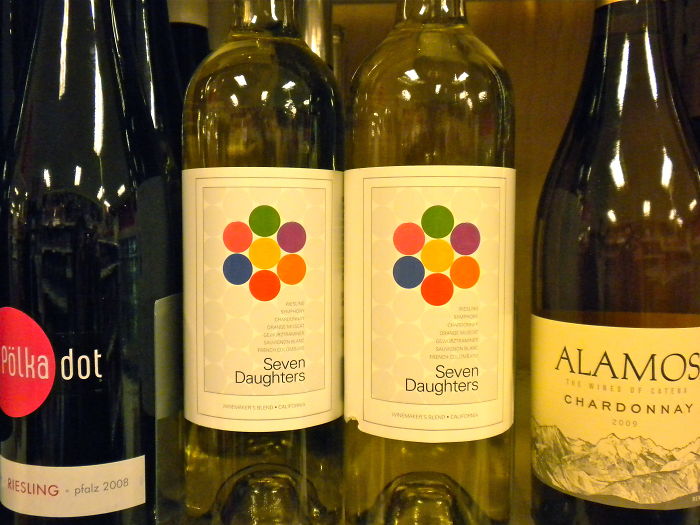 Indentation at the bottom of a wine bottle. Contrary to popular belief, the indentation at the bottom of a wine bottle doesn’t actually indicate the superior quality of the wine. Also known as a punt, back in the day, it used to be found in handblown wine bottles.The seam of the bottle at the bottom was pushed up in order to prevent an outward nub at the bottom that would keep a bottle from balancing upright. It’s also thought that the punt added to the bottle’s structural integrity.Since modern-day bottles are much stronger and machine-made, punts serve no practical purpose and simply remain a part of tradition.
Indentation at the bottom of a wine bottle. Contrary to popular belief, the indentation at the bottom of a wine bottle doesn’t actually indicate the superior quality of the wine. Also known as a punt, back in the day, it used to be found in handblown wine bottles.The seam of the bottle at the bottom was pushed up in order to prevent an outward nub at the bottom that would keep a bottle from balancing upright. It’s also thought that the punt added to the bottle’s structural integrity.Since modern-day bottles are much stronger and machine-made, punts serve no practical purpose and simply remain a part of tradition. -
29.
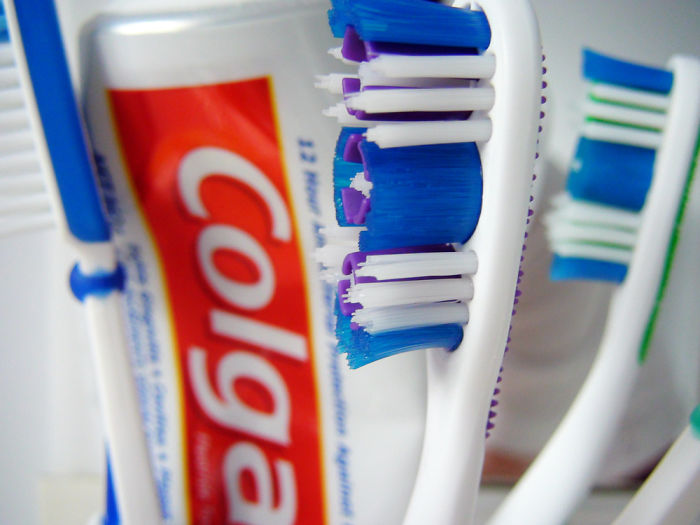 While you may have thought that the colorful bristles on your toothbrush are just yet another marketing gimmick, this seemingly pointless addition actually serves a real purpose. The blue color of your toothbrush bristles will fade right about the same time you need to get a new one. It's a reminder that you aren’t exactly keeping things as clean and fresh as you could be.
While you may have thought that the colorful bristles on your toothbrush are just yet another marketing gimmick, this seemingly pointless addition actually serves a real purpose. The blue color of your toothbrush bristles will fade right about the same time you need to get a new one. It's a reminder that you aren’t exactly keeping things as clean and fresh as you could be. -
30.
 Golf Ball Dimples. It turns out, golf players didn’t like nice and smooth golf balls since they didn’t play as well as the used ones. When they started using old golf balls, manufacturers had to come up with a way of selling the new balls. As a result, they redesigned the old ones and made them to have dimples that recreated this “worn down” look and feel.
Golf Ball Dimples. It turns out, golf players didn’t like nice and smooth golf balls since they didn’t play as well as the used ones. When they started using old golf balls, manufacturers had to come up with a way of selling the new balls. As a result, they redesigned the old ones and made them to have dimples that recreated this “worn down” look and feel. -
31.
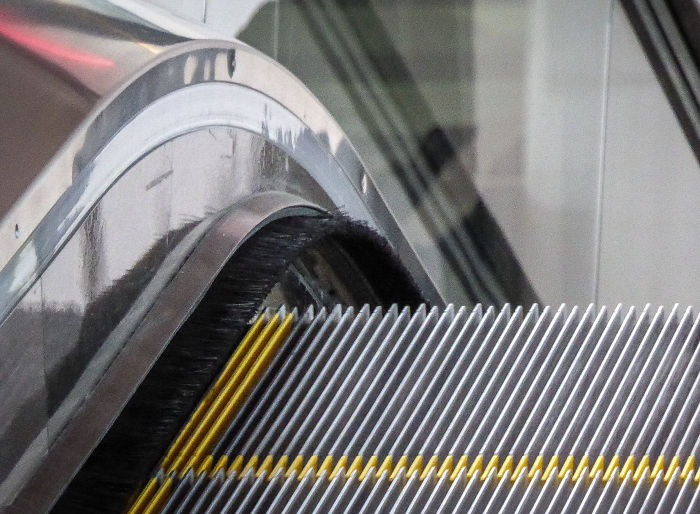 The brushes on the sides of escalators aren’t for polishing your shoes. You may have been using these escalator brushes to clean your shoes, however, these bristles are actually a big safety feature. One of the biggest reasons for escalator mishaps is people getting their clothes and bags stuck in them when they stand too close to the sides. These nylon bristles play with your mind and make you keep your feet away from the escalator’s skirt panels, hence avoiding accidents.
The brushes on the sides of escalators aren’t for polishing your shoes. You may have been using these escalator brushes to clean your shoes, however, these bristles are actually a big safety feature. One of the biggest reasons for escalator mishaps is people getting their clothes and bags stuck in them when they stand too close to the sides. These nylon bristles play with your mind and make you keep your feet away from the escalator’s skirt panels, hence avoiding accidents. -
32.
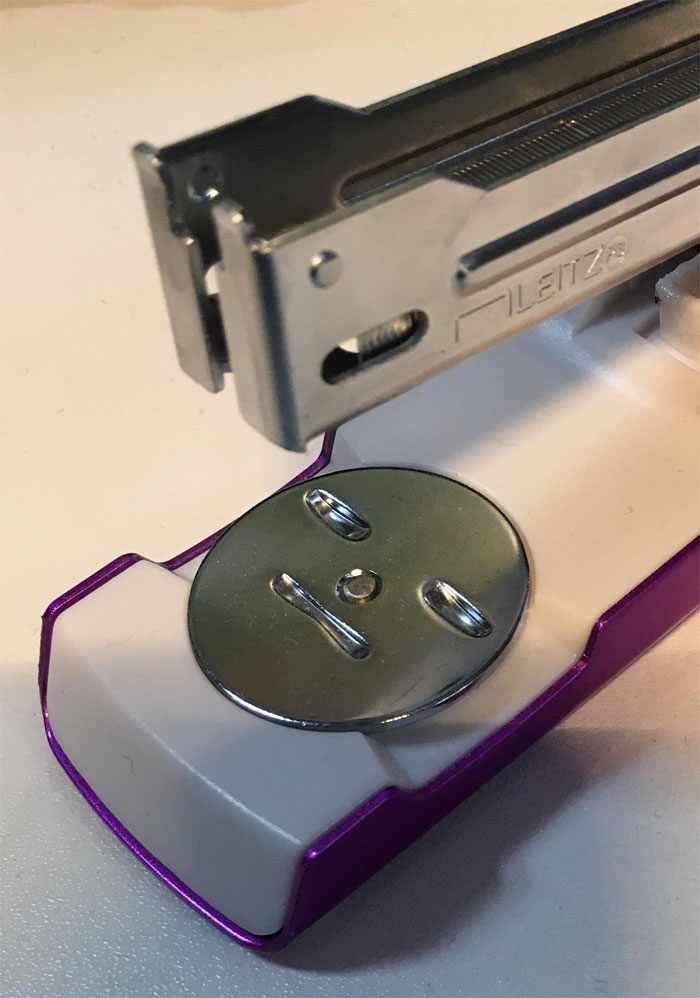 The Metal Plates On Staplers. You may have noticed the metal plate toward the front end of your stapler. If you just assumed it’s there to act as reinforcement to bend the staples you’d be right, but did you know there’s more to it than that, and that your stapler actually has settings? No joke. The metal plate is called an anvil, and if you turn your stapler upside down you can adjust it by spinning the wheel until it lines up with the seemingly random hole in the metal plate. This setting is for a “temporary staple”, and will guide the arms of your staple outward instead of inwards, making it easier to pull out the staple later.
The Metal Plates On Staplers. You may have noticed the metal plate toward the front end of your stapler. If you just assumed it’s there to act as reinforcement to bend the staples you’d be right, but did you know there’s more to it than that, and that your stapler actually has settings? No joke. The metal plate is called an anvil, and if you turn your stapler upside down you can adjust it by spinning the wheel until it lines up with the seemingly random hole in the metal plate. This setting is for a “temporary staple”, and will guide the arms of your staple outward instead of inwards, making it easier to pull out the staple later. -
33.
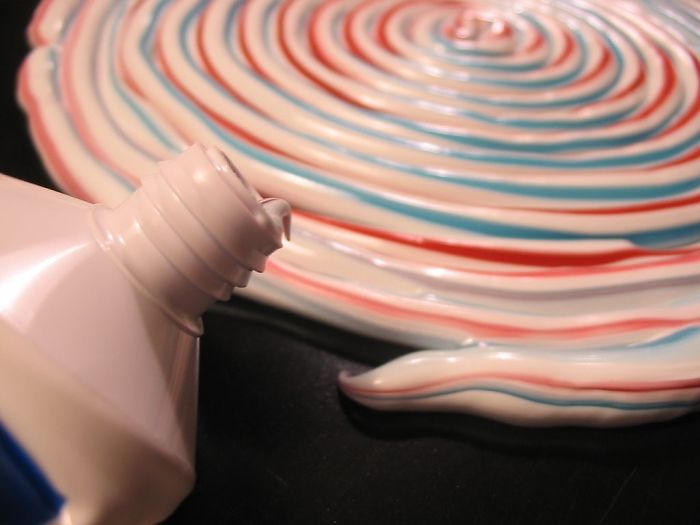 In the 1970s, cleaning the mouth to keep it healthy wasn’t enough; people wanted something in the toothpaste to freshen the breath, too. Aquafresh answered the call by adding in a blue stripe to their paste to indicate that it could do both. After people began paying more attention to the health of their gums, the brand added a 3rd red stripe to their product, indicating that their paste now had triple action; cleaning, freshening, and plaque control. Even though solid white toothpaste offers the same benefits, companies continue to add stripes to their paste because it still sells.
In the 1970s, cleaning the mouth to keep it healthy wasn’t enough; people wanted something in the toothpaste to freshen the breath, too. Aquafresh answered the call by adding in a blue stripe to their paste to indicate that it could do both. After people began paying more attention to the health of their gums, the brand added a 3rd red stripe to their product, indicating that their paste now had triple action; cleaning, freshening, and plaque control. Even though solid white toothpaste offers the same benefits, companies continue to add stripes to their paste because it still sells. -
34.
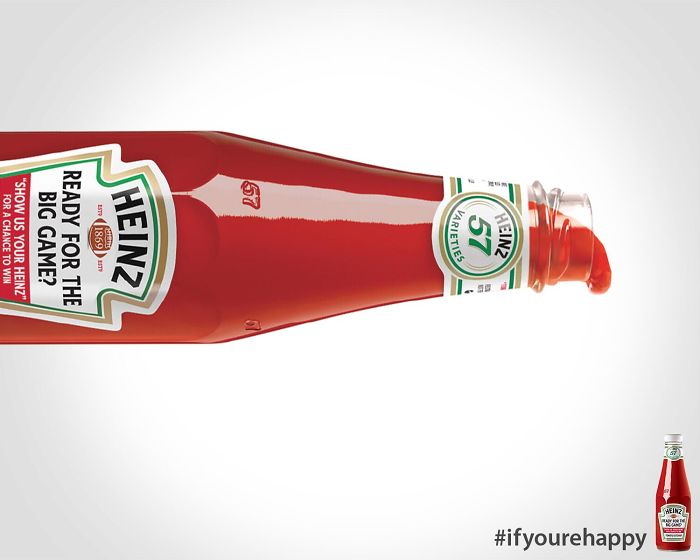 The number "57" on a Heinz bottle. Apparently, the embossed number "57" on Heinz’s bottle is what the company’s spokesperson calls a soft spot. “All you need to do is apply a firm tap where the bottle narrows, and the ketchup will come out easier." No need to punch that bottle too much!
The number "57" on a Heinz bottle. Apparently, the embossed number "57" on Heinz’s bottle is what the company’s spokesperson calls a soft spot. “All you need to do is apply a firm tap where the bottle narrows, and the ketchup will come out easier." No need to punch that bottle too much! -
35.
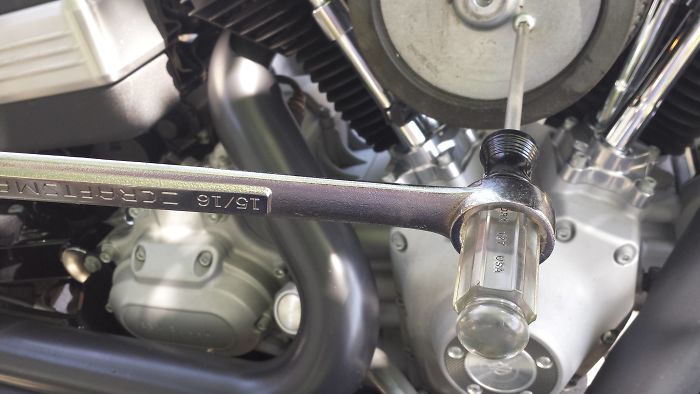 You can use your screwdrivers as wrenches as well. A lot of screwdrivers can be easily slid through a wrench and are used to create more torque. This feature is especially helpful at complicated heights and angles.
You can use your screwdrivers as wrenches as well. A lot of screwdrivers can be easily slid through a wrench and are used to create more torque. This feature is especially helpful at complicated heights and angles. -
36.
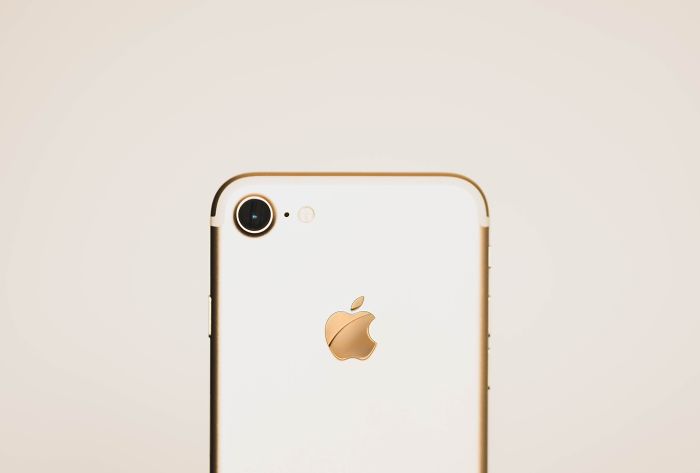 The tiny dot next to the camera on an iPhone. While you might think that it's some sort of miniature flash device or a fashion statement, it's actually a microphone that helps record sound when you're using the back camera.
The tiny dot next to the camera on an iPhone. While you might think that it's some sort of miniature flash device or a fashion statement, it's actually a microphone that helps record sound when you're using the back camera. -
37.
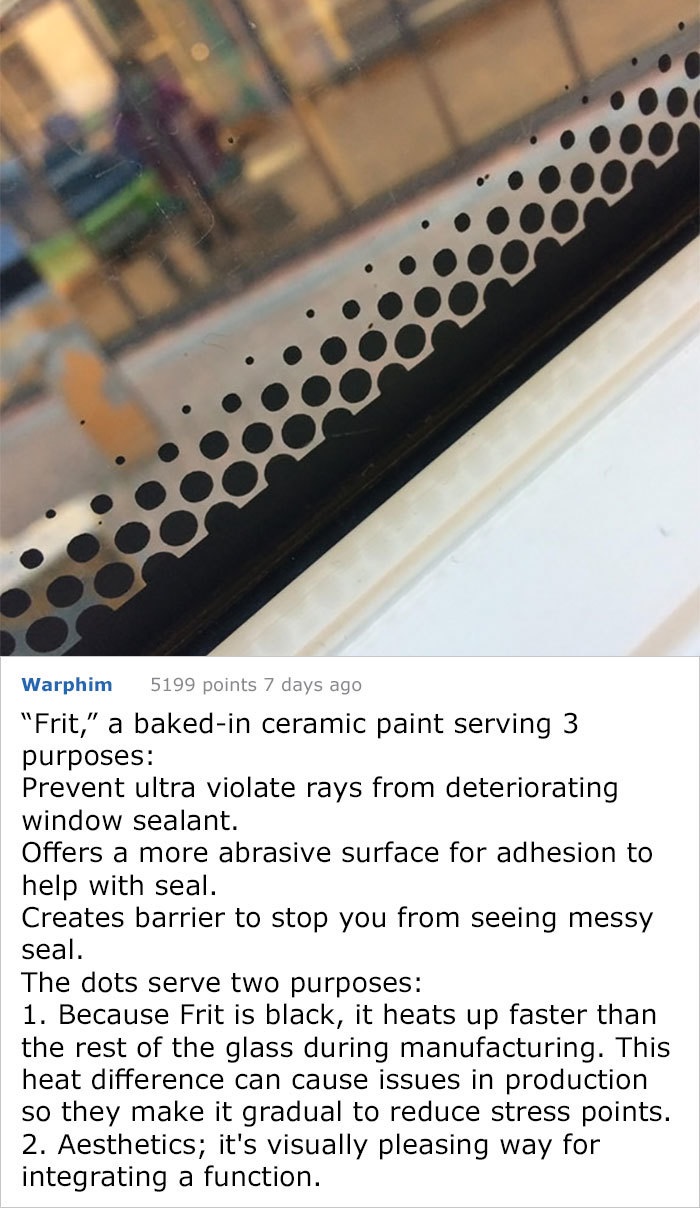
-
38.
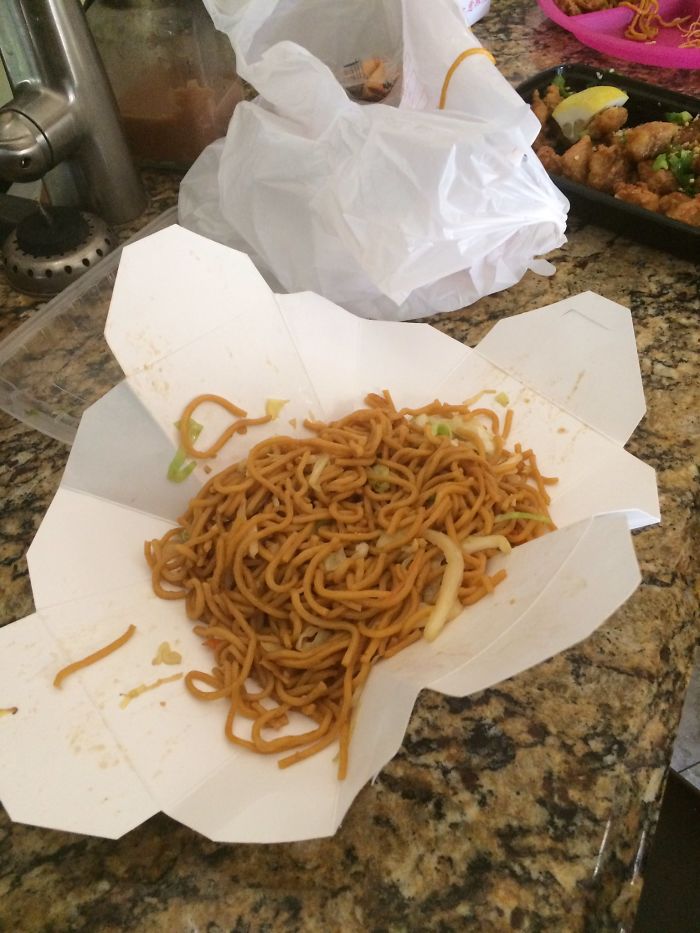 If you have ever picked up Chinese food takeout and requested paper plates only to be judged, there’s a good reason for that. The Chinese food takeout boxes are made in such a way that when you unfold them, they become cardboard dinner plates. The best part? Your food is already on the platter, so you can just dig in. They’re looking at you like you’re crazy because you already got the plates!
If you have ever picked up Chinese food takeout and requested paper plates only to be judged, there’s a good reason for that. The Chinese food takeout boxes are made in such a way that when you unfold them, they become cardboard dinner plates. The best part? Your food is already on the platter, so you can just dig in. They’re looking at you like you’re crazy because you already got the plates! -
39.
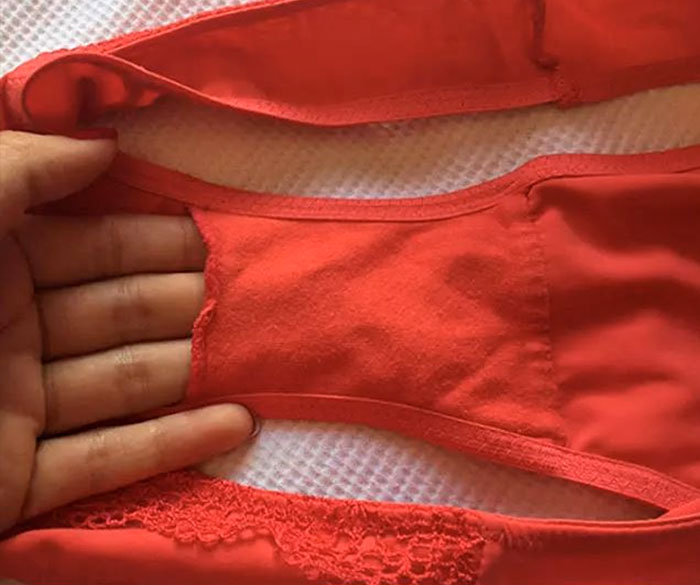 Many men would probably be surprised to learn that not all women know the specific purpose of the small pocket sewn into their panties! Although some women have been using them for storing tampons or other small, private items, this actually isn’t why it’s there. The 'pocket' is actually called a panty gusset, and was never intended to be a pocket. Rather, it is an extra piece of fabric sewn in for women’s hygiene and in the higher-end panties, the gusset is sewn completely shut. It becomes a 'pocket' when manufacturers are unwilling to spend the time and money to get those last few stitches in!
Many men would probably be surprised to learn that not all women know the specific purpose of the small pocket sewn into their panties! Although some women have been using them for storing tampons or other small, private items, this actually isn’t why it’s there. The 'pocket' is actually called a panty gusset, and was never intended to be a pocket. Rather, it is an extra piece of fabric sewn in for women’s hygiene and in the higher-end panties, the gusset is sewn completely shut. It becomes a 'pocket' when manufacturers are unwilling to spend the time and money to get those last few stitches in! -
40.
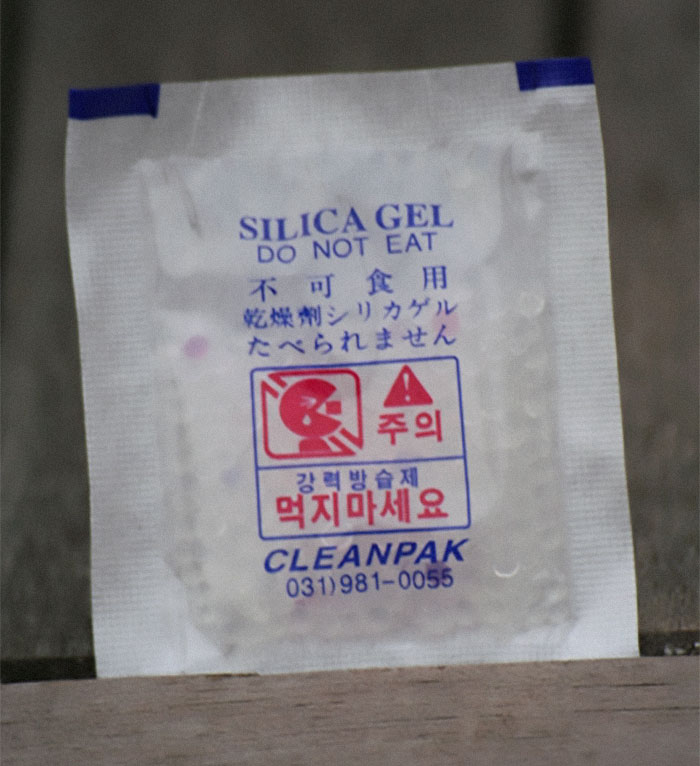 Silica gel packets. You probably know that those little silica gel packets are meant to preserve freshness. There’s no magic here. The packets have silica gel beads inside that absorb humidity in an enclosed environment, protecting products from dampness.Typically, when silica gel packets absorb water, of which they can contain up to 40 percent of their weight, they're no longer effective. However, you can try to restore them by drying them out again in the sun.
Silica gel packets. You probably know that those little silica gel packets are meant to preserve freshness. There’s no magic here. The packets have silica gel beads inside that absorb humidity in an enclosed environment, protecting products from dampness.Typically, when silica gel packets absorb water, of which they can contain up to 40 percent of their weight, they're no longer effective. However, you can try to restore them by drying them out again in the sun. -
41.
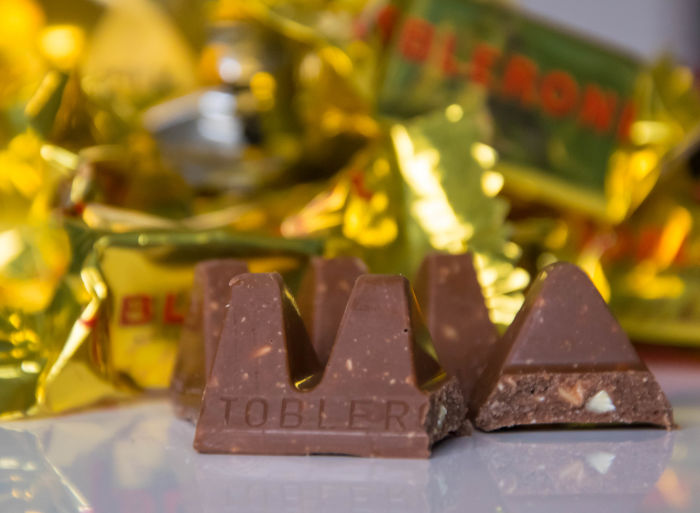 The delicious Toblerone candy bar was first manufactured in Switzerland, so it is easy to see why people assume that the odd triangular shape of the candy bar is a shout out to the Swiss Alps. Actually, the design of the chocolate bar is all about function, not aesthetic. The pieces are in triangles so that if you press on one of them with your thumb, it will snap off easily and leave you with the perfect sized serving.
The delicious Toblerone candy bar was first manufactured in Switzerland, so it is easy to see why people assume that the odd triangular shape of the candy bar is a shout out to the Swiss Alps. Actually, the design of the chocolate bar is all about function, not aesthetic. The pieces are in triangles so that if you press on one of them with your thumb, it will snap off easily and leave you with the perfect sized serving. -
42.
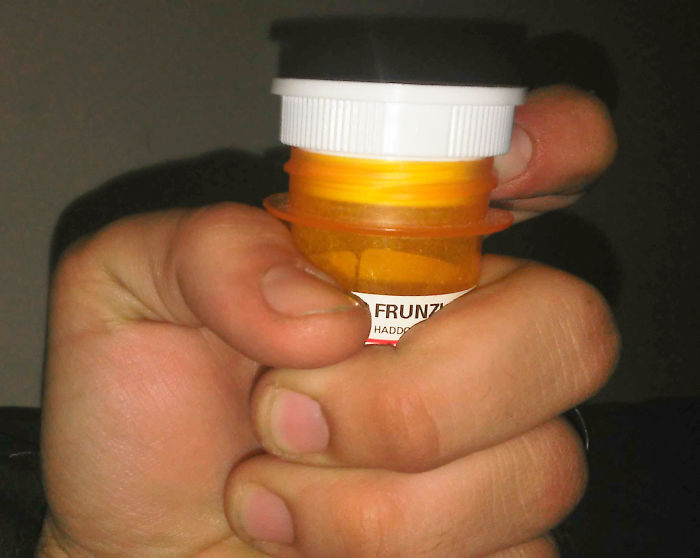 Child-proof medicine bottles. Child-proof prescription bottles generally have one or two raised sections above a ribbed base. These raised sections on a cap make it harder to remove the cap. However, if you don’t have to worry about the little ones at home, there’s a quick trick for hassle-free opening. When you remove the cap, flip it upside down and screw it back in. When the raised sections are pointing toward the bottom of the bottle, you can open the bottles easily.
Child-proof medicine bottles. Child-proof prescription bottles generally have one or two raised sections above a ribbed base. These raised sections on a cap make it harder to remove the cap. However, if you don’t have to worry about the little ones at home, there’s a quick trick for hassle-free opening. When you remove the cap, flip it upside down and screw it back in. When the raised sections are pointing toward the bottom of the bottle, you can open the bottles easily. -
43.
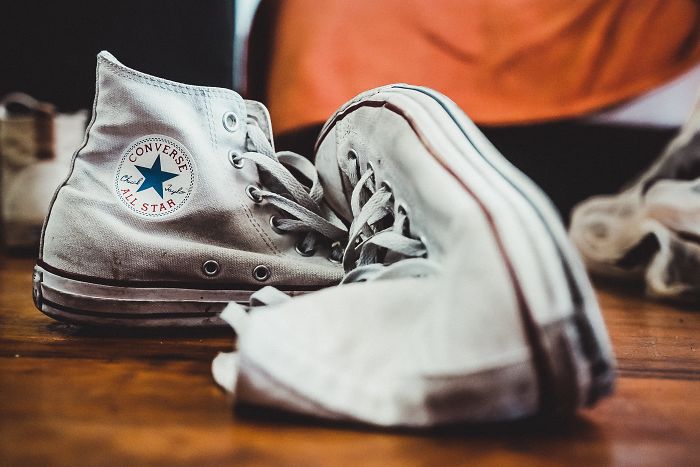 The side holes in Converse shoes. If you've ever owned a pair of Converse, you've probably noticed these two little holes on the side of the shoes. It turns out, these two are designed to allow you to get creative with lacing techniques, like zig-zagging them across the whole width of our feet. The second use of the holes is to provide much-needed ventilation. Another theory is that if the shoes don’t fit properly, you can tighten them up by using these two holes.
The side holes in Converse shoes. If you've ever owned a pair of Converse, you've probably noticed these two little holes on the side of the shoes. It turns out, these two are designed to allow you to get creative with lacing techniques, like zig-zagging them across the whole width of our feet. The second use of the holes is to provide much-needed ventilation. Another theory is that if the shoes don’t fit properly, you can tighten them up by using these two holes. -
44.
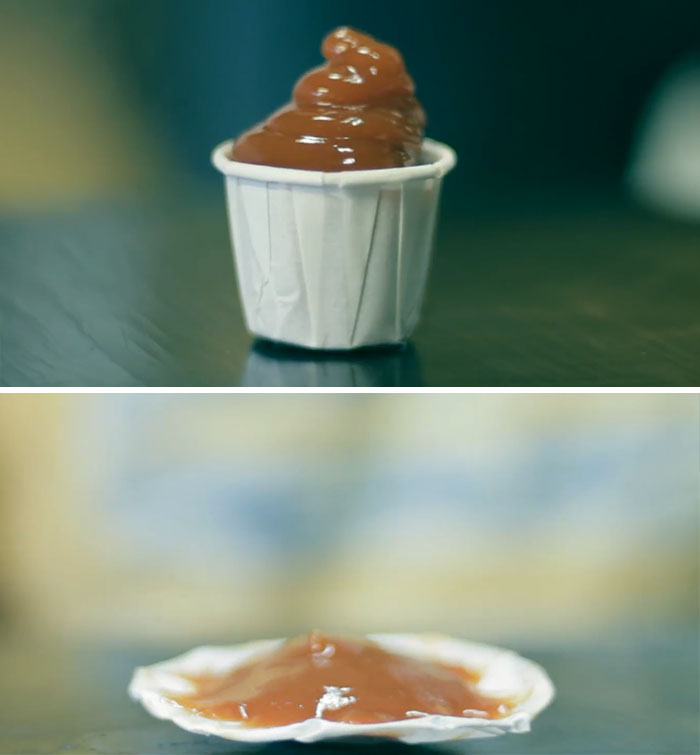 Paper Condiment Cups At Fast Food Restaurants. Have you ever asked yourself why the fast food restaurants use such tiny cups for the ketchup and mustard? Based on the amount of fries they serve in even their smallest size container, clearly they are aware that you’ll be needing just a little bit more dipping sauce. So then, why the folded paper cups? It all comes down to the purpose of those folds. When you unfold the paper cups, they turn into small paper platters that can hold a great deal more sauce for all your dipping needs. Nifty, right?
Paper Condiment Cups At Fast Food Restaurants. Have you ever asked yourself why the fast food restaurants use such tiny cups for the ketchup and mustard? Based on the amount of fries they serve in even their smallest size container, clearly they are aware that you’ll be needing just a little bit more dipping sauce. So then, why the folded paper cups? It all comes down to the purpose of those folds. When you unfold the paper cups, they turn into small paper platters that can hold a great deal more sauce for all your dipping needs. Nifty, right? -
45.
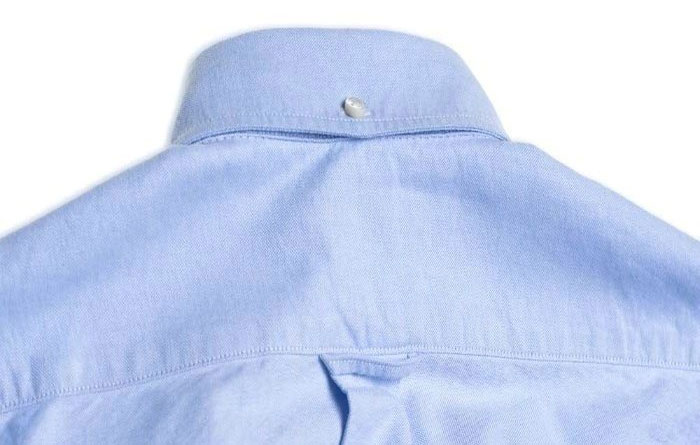 Loop on Your Shirt. There are some shirts that contain a piece of cloth in the form of a loop. This was actually designed so you can hang your shirts on a hook in a dressing room or even a closet. It’s a perfect solution when you don’t have any hangers left.
Loop on Your Shirt. There are some shirts that contain a piece of cloth in the form of a loop. This was actually designed so you can hang your shirts on a hook in a dressing room or even a closet. It’s a perfect solution when you don’t have any hangers left. -
46.
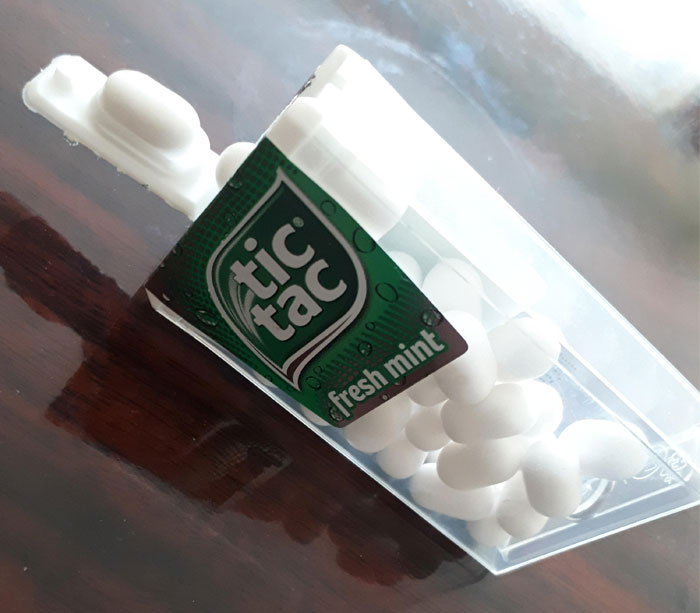 Eat Tic Tacs the Right Way. Did you know that all Tic Tac containers were designed to dispense one Tic Tac at a time? That certainly explains the tiny indentation on the lid which is shaped exactly like the candy. Most of us just lift the tab up and shake the container a couple of times until six of these fresh minty treats fall into the palm of our hands.
Eat Tic Tacs the Right Way. Did you know that all Tic Tac containers were designed to dispense one Tic Tac at a time? That certainly explains the tiny indentation on the lid which is shaped exactly like the candy. Most of us just lift the tab up and shake the container a couple of times until six of these fresh minty treats fall into the palm of our hands. -
47.
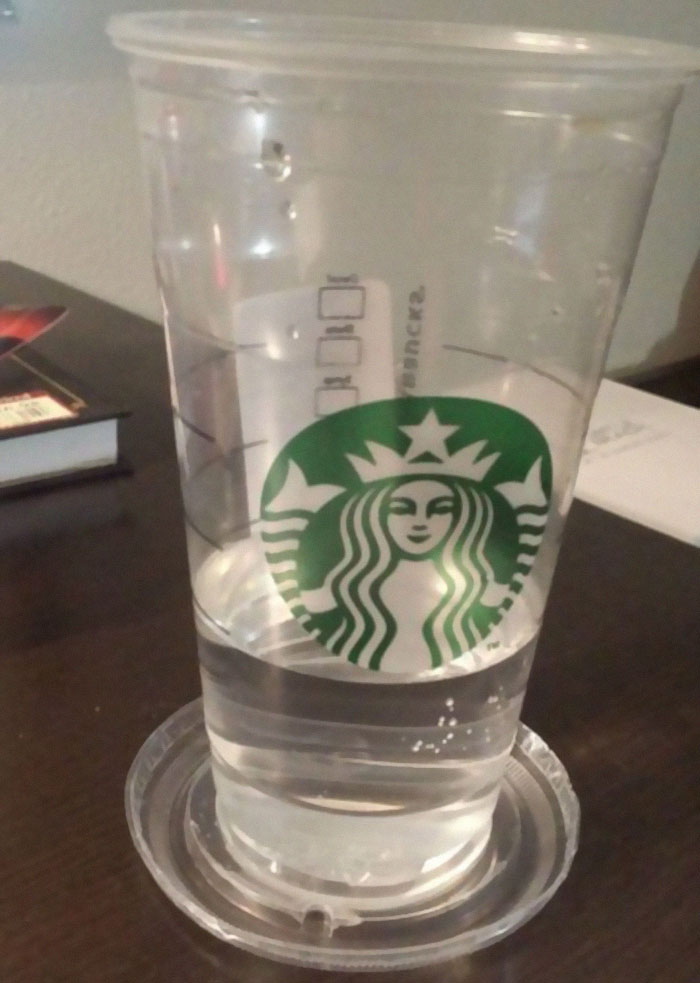 The lids of many restaurant cups can double as coasters. Just flip them upside down and set the cup on them. It will keep your cup from dripping all over the place and could help prevent a mess.
The lids of many restaurant cups can double as coasters. Just flip them upside down and set the cup on them. It will keep your cup from dripping all over the place and could help prevent a mess. -
48.
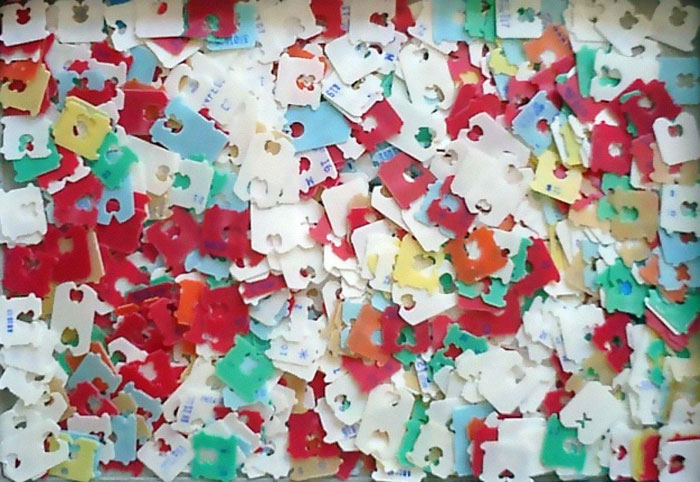 The Colorful Bread Tags. If you collect bread tags for some odd reason, you might have noticed that they come in different colors. It turns out that the color tags indicate the day the bread was delivered. So, if you need to know how fresh your bread is, all you have to do is look at the color tag.
The Colorful Bread Tags. If you collect bread tags for some odd reason, you might have noticed that they come in different colors. It turns out that the color tags indicate the day the bread was delivered. So, if you need to know how fresh your bread is, all you have to do is look at the color tag. -
49.
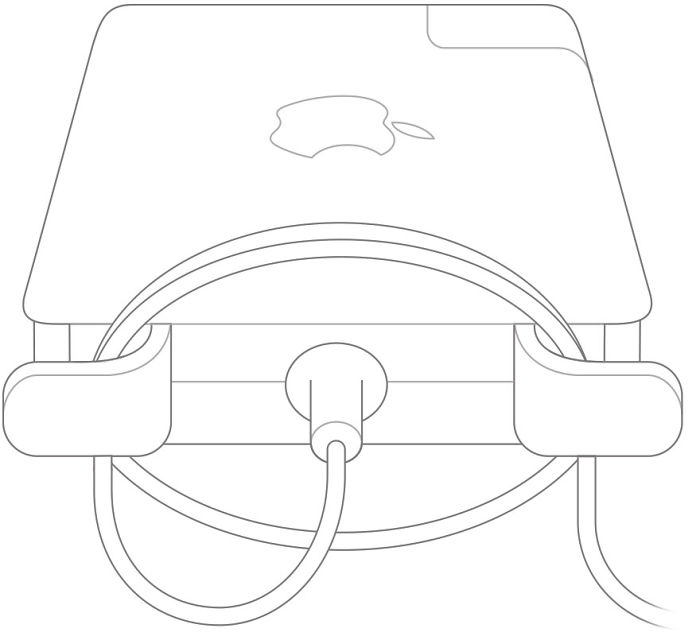 The little wings on an Apple charger can be flipped up to wind the wire, keeping it tangle-free in your bag.
The little wings on an Apple charger can be flipped up to wind the wire, keeping it tangle-free in your bag. -
50.
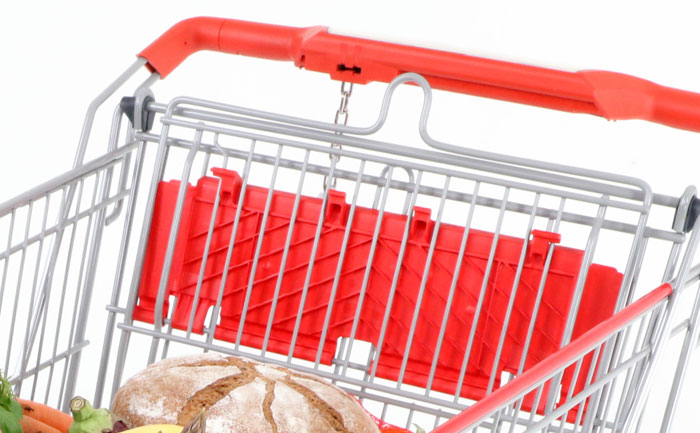 The Loops In The Frame Of A Grocery Cart. The grocery cart, of all things we use in our day to day life, should certainly be the most self-explanatory, or at least one would think. Sometimes the purpose of everyday items get lost amongst its main function, which in this instance is to carry your groceries around while you shop. The manufacturers of these seemingly basic carts are more forward-thinking than we’ve given them credit for, though. While even our checkers and baggers don’t know it, there is a purpose behind those metal loops that frame the top fold out section of our grocery carts; to hang your bags with light items like bread and eggs from so they don’t get smashed among your heavier goods. Do your grocers a favor and show them how it’s done next time to make their lives easier.
The Loops In The Frame Of A Grocery Cart. The grocery cart, of all things we use in our day to day life, should certainly be the most self-explanatory, or at least one would think. Sometimes the purpose of everyday items get lost amongst its main function, which in this instance is to carry your groceries around while you shop. The manufacturers of these seemingly basic carts are more forward-thinking than we’ve given them credit for, though. While even our checkers and baggers don’t know it, there is a purpose behind those metal loops that frame the top fold out section of our grocery carts; to hang your bags with light items like bread and eggs from so they don’t get smashed among your heavier goods. Do your grocers a favor and show them how it’s done next time to make their lives easier. -
51.
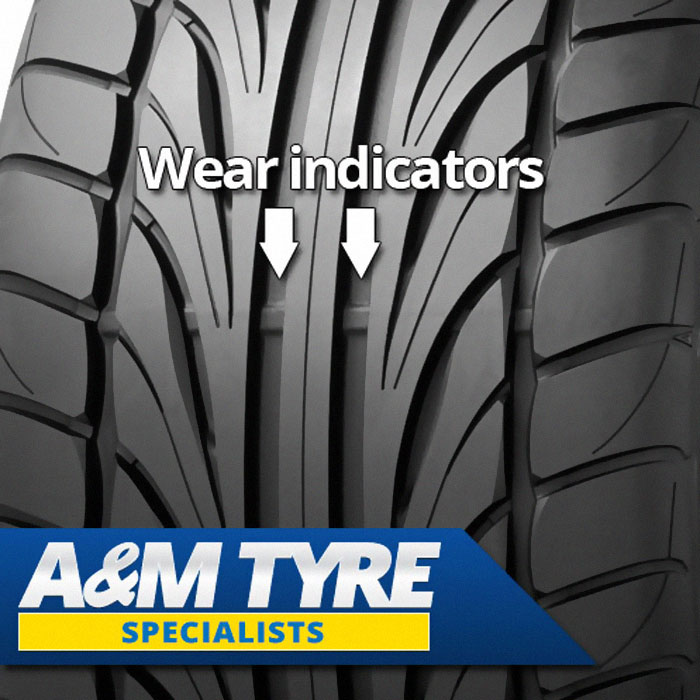 Rubber Bumps In The Grooves Of Your Tire Tread. These little rubber bumps are so inconspicuous, you might never notice them unless checking the tread on your tire. Oddly enough, that is exactly what they are meant for. The little-raised edges inside the grooves of your tire’s tread are there to let you know when it’s time to change your tires. While many people still rely on the old penny head trick, an easy way to tell if you need to get to the tire shop is if the edges of your tread are even with the bumps. If they are, then you are driving on legally unsafe tires. If the edge is above that of the bump, you’re good to keep cruising for a while.
Rubber Bumps In The Grooves Of Your Tire Tread. These little rubber bumps are so inconspicuous, you might never notice them unless checking the tread on your tire. Oddly enough, that is exactly what they are meant for. The little-raised edges inside the grooves of your tire’s tread are there to let you know when it’s time to change your tires. While many people still rely on the old penny head trick, an easy way to tell if you need to get to the tire shop is if the edges of your tread are even with the bumps. If they are, then you are driving on legally unsafe tires. If the edge is above that of the bump, you’re good to keep cruising for a while. -
52.
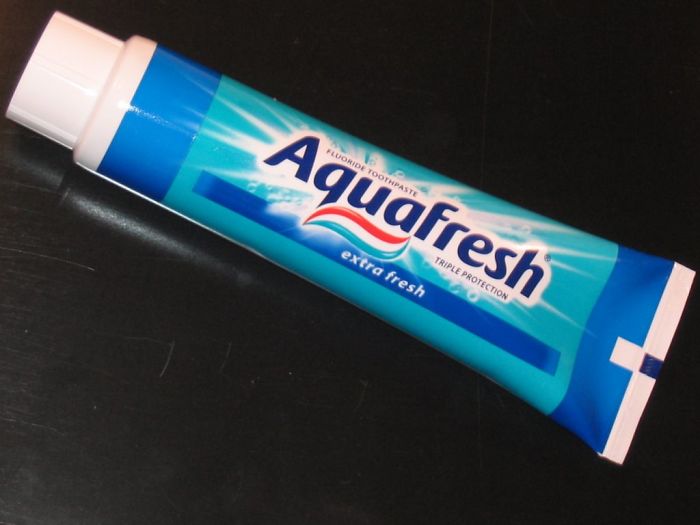 A Toothpaste Tube’s Colored Squares. The toothpaste tube’s colored squares at the bottom aren’t there because they look pretty. They’re eye marks that tell assembly line machines where to cut and where to fold the packaging. Otherwise, toothpaste tubes would come out stuck to each other.
A Toothpaste Tube’s Colored Squares. The toothpaste tube’s colored squares at the bottom aren’t there because they look pretty. They’re eye marks that tell assembly line machines where to cut and where to fold the packaging. Otherwise, toothpaste tubes would come out stuck to each other. -
53.
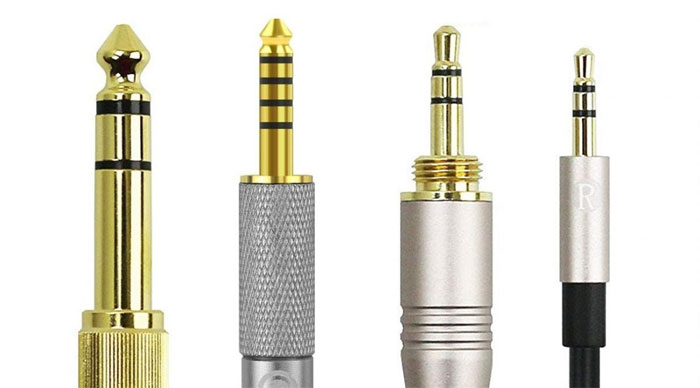 The Threaded Bands On Audio Jacks. The deep ridges or threads on audio-jacks aren’t just there for a tighter fit when plugged in. These bands are made of an insulating material used to protect the wires while the sound is being transmitted. Additionally, the number of bands indicates which end goes where. Three bands equate to one band per left and right ear, and the third band for grounding, and should be plugged into the stereo or amplifier, while 2 bands indicate the end that plugs into a device.
The Threaded Bands On Audio Jacks. The deep ridges or threads on audio-jacks aren’t just there for a tighter fit when plugged in. These bands are made of an insulating material used to protect the wires while the sound is being transmitted. Additionally, the number of bands indicates which end goes where. Three bands equate to one band per left and right ear, and the third band for grounding, and should be plugged into the stereo or amplifier, while 2 bands indicate the end that plugs into a device.
- REPLAY GALLERY
-
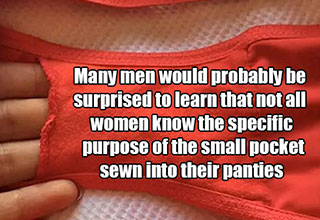
- 53 Hidden Stories Behind Features on Everyday Objects
- NEXT GALLERY
-
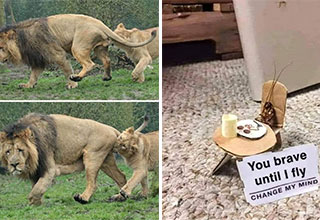
- 43 Radical Randoms I Wanted to Share
The pom-poms on beanies and other hats. They might look cute and fluffy now but they had an actual function before. French sailors used to wear hats with pom-poms so that they wouldn't hurt their heads on the ceilings of the ship during rough weather.
53/53
1/53
Categories:
Wow



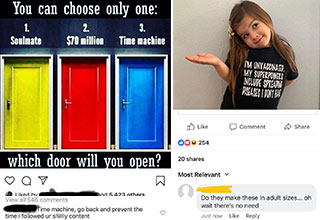



21 Comments